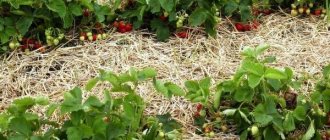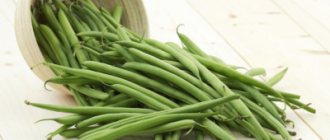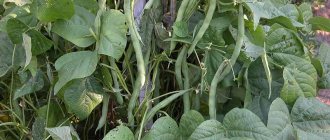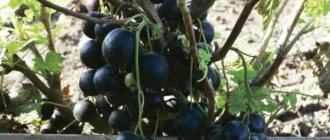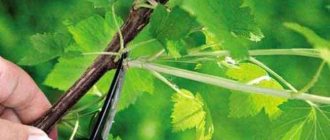Today all nutritionists talk about the benefits of beans. It is a source of protein and vitamins. However, there are many varieties of beans: there are black and white, red and green, and yellow. Each of them has its own set of minerals and vitamins. The question of which one is more useful is still open, although it interests many people. Of course, any legume plant is an excellent source of nutrients, but we will still try to find the optimal variety.
Is there a difference?
Do all these varieties differ depending on the composition? Modern research has shown that yes, and quite strongly. For example, red beans (298 kcal per 100 g) have almost three times more calories compared to white beans (102 kcal per 100 g). But the difference doesn't stop there. Red beans are about three times richer in protein and carbohydrates than white beans. But let us emphasize once again that any legumes are extremely beneficial for our body, because they contain a huge amount of protein. Now let's talk about which beans are healthier - white or red.
Calorie content and chemical composition
Caloric content and chemical composition may vary slightly, but the main characteristics are as follows:
- calorie content - 298 kcal;
- proteins - 21–30 g;
- fat content - 2–3.5 g;
- carbohydrates - 50–60 g;
- dietary fiber - 10–12 g;
- essential amino acids;
- sterols;
- organic acids;
- vitamins - A, group B, E, PP, K, choline;
- macro- and microelements - Ca, Si, Mg, Na, Ph, Fe, I, Co, Mn, Cu, Mo, Se, Cr, Zn, etc.
The most popular variety
Most often we have red beans on our tables. It is bright, looks great on the table and complements many meat and vegetable dishes. But it's not just about beauty. It is important for us to find out which beans are healthier - white or red. Extensive research has been conducted to find the best antioxidants. The products studied included fruits, berries, nuts, and red beans. At the same time, the latter even left currants behind, becoming an ideal antioxidant. This substance effectively protects against radicals that cause various diseases, including cancer.
General rules for selection and storage
High-quality beans should have the following characteristics:
- the beans should be freely separated from one another when poured, there should be no sticky fruits;
- there should be no foreign deposits on the surface - high-quality beans have a smooth appearance, with a slight sheen;
- there should not be any foreign plant or other residues in the total mass;
- the fruits should be approximately the same size;
- white varieties are most susceptible to attacks by insects and worms - remember this when visually inspecting such fruits.
Beans should be stored in a dark, dry place, preferably in thick canvas bags. Young green beans can be frozen.
A little red
And we continue to discuss the question of which beans are healthier - white or red. Below we will talk about the fact that for various diseases the focus may shift somewhat, but in general, nutritionists say that it is important to regularly include this product in your menu. And red beans can be safely added to the list of plant foods that are vital for our body. Let's look at why now. This product is devoid of fats, or rather, their concentration is so minute that it can be ignored. Instead of synthetic vitamin complexes, prepare a delicious soup or salad. It will warm and saturate the body with everything it needs. This is a real storehouse of useful substances, especially in winter. It is no less rich in minerals. The composition contains zinc and copper, potassium and sulfur, iron and much more.
Cooking recommendations
Before cooking soups or main courses, red beans should be soaked in warm water for 2-3 hours. Add ½ teaspoon of baking soda to 1 liter of water. This will reduce the cooking time by 2 times. White beans cook faster; it is not necessary to soak them; it is better to scald the grains with boiling water.
Before freezing, the beans are blanched, kept in boiling water for up to 5-7 minutes, and drained in a colander. Place on a towel to partially dry, then place in containers for freezing.
For canning, beans are prepared in the same order: the beans are blanched, placed in jars, spices, sugar and salt are added according to recipes. The jars are hermetically sealed.
White beans
This is the undisputed leader in fiber content. We have already compared these two types, although we have not come to a final conclusion which beans are healthier - white or red. “Sportviki” most often prefers the colorless variety, since it has the least calories. At the same time, white beans are digested very quickly. Just one glass can fully satisfy the body's need for fiber. This is an ideal option for those on a diet. The low-calorie product is also rich in vitamins and minerals, like its red counterpart.
Many women note that regular consumption of beans gives visible results. The condition of the skin, nails and hair improves. This is achieved due to the sulfur content in legumes. And the iron in the composition helps to avoid anemia and improves heart function.
Who prefers which beans?
The difference between white and red is insignificant. However, in some cases a choice must be made between them.
Red
- Since red has a higher nutritional value, it should be consumed by people with an active lifestyle. It will restore strength and give them the necessary energy.
- Indeed, in red beans the number of amino acids, vitamins, microelements and macroelements is huge.
- For example, kindi beans are known for their higher dietary fiber content than white beans. This contributes to a more effective cleansing of poisons and lowering cholesterol.
White
- White has more vitamin C, so consuming this type of plant will help strengthen the immune system.
- In addition, it contains more iron, which puts it on a par with products that are useful and necessary for people with anemia.
- It guarantees a good calcium reserve, preventing the formation of osteoporosis.
Gender differences
As you can see, it is quite difficult to unambiguously answer the question of which beans are healthier - white or red. For women who are watching their figure, the best option would be colorless, since it satisfies well, allows you to go a long time without snacking, but also contains few calories. True, if a woman is engaged in serious physical labor, then it is quite possible that she will choose red beans. The same opinion is generally shared by the strong half of humanity. Red beans are more nutritious, which means they better provide the body with energy. Accordingly, it provides more amino acids and B vitamins, as well as sodium and magnesium, phosphorus and potassium, zinc and selenium.
Which beans are healthier - white or red? Differences, description and calorie content
Due to their lower calorie content, white beans are an excellent food for people who want to lose extra pounds. Due to its low (compared to other types) protein content, it is suitable for older people, since any protein is more difficult to digest by the body than carbohydrates. The vitamins and minerals contained in beans help normalize the functioning of the cardiovascular system. The low protein and fiber content promotes rapid absorption of white varieties by the body.
Here are examples of such varieties:
- "Nevi";
- "Limskaya";
- "Black eye".
Among the most common varieties of this variety are the following:
- "Tomato";
- "Kidney";
- "Azuki."
Today, more than 220 varieties of beans are known. In addition to white and red, there are also black, green, spotted, asparagus, capsicum and some other species that are little known in Russia and Ukraine.
The entire variety of bean varieties is divided into 2 main types according to the region of origin of the crop:
- Asian - has an elongated fruit shape and a small seed;
- American - beans that are round in shape and larger in size.
There is another, more traditional division of the varieties of these legumes:
- bush;
- asparagus;
- curly;
- peeling
For pregnant women
The benefits of legumes for expectant mothers are difficult to overestimate. This is an excellent source of protein, amino acids and vitamins, which are so important during this difficult period. The high fiber content will effectively eliminate constipation, which is not uncommon during this difficult period. Dietary fiber swells in the stomach, which means you won’t want to eat for a long time. Therefore, if you constantly feel hungry, then these dishes are especially for you. Moreover, beans stewed with vegetables are much healthier than potatoes with pork. And B vitamins and iron are another reason to eat legumes.
Which beans are healthier (white or red) for pregnant women? If you are overweight, choose white. And for normal weight, red or black, which is the record holder for protein content, is best. The most important thing is to soak the beans overnight in cold water before cooking. Then the beans will not cause painful flatulence. It is very important to fully cook the beans, because raw or undercooked, they are a source of toxic substances.
Health benefits and harms
The red variety of legumes contains a lot of fiber, which gives energy. Due to the increased calorie content, it saturates with a feeling of fullness. Eliminates toxins and the formation of malignant tumors. May cause gas and stomach upset. Contains toxic substances that can only be killed by heat treatment.
White beans are lower in calories and are good for weight loss. It cooks quickly and does not overload the digestive tract. When used regularly in food, it relieves diseases of the genitourinary system, prevents tartar and helps remove stones from the kidneys. May cause flatulence, diarrhea and heaviness in the stomach.
To avoid discomfort in the intestines, it is better to rinse the beans before cooking and preferably leave them to soak for several hours. Change the water several times during the cooking process. Both types are not recommended for consumption by people suffering from gastrointestinal diseases, gout and cholecystitis.
What to look for when choosing beans
When choosing beans, pay attention to appearance. If the product is already packaged and packaged, look at the expiration date and integrity of the packaging
White varieties, unlike red ones, are most vulnerable to bug attacks. Beans are suitable for food according to the following characteristics:
- the structure is smooth, elastic, without any damage, plaque or stains;
- except beans, nothing unnecessary, namely: particles of dirt, other cereals and dry foreign fractions;
- same size and free-flowing.
Storing legumes
To prevent bugs and other insects from getting in, there are 2 ways to store beans: drying and freezing. Before storing grains, they must be carefully sorted and the bad and rotten ones must be thrown away. Place on a baking sheet and place in the oven preheated to 60℃ for an hour. Thus, all existing bugs will die under the influence of temperature. After the time has passed, wait for the product to cool completely. Pour the contents into a bag and place in the freezer. For storage at home, use dark glass containers or canvas bags folded in half.
Attention! If you do not completely cook the product, you may have stomach problems, and if you overcook it, the amount of beneficial properties will decrease by half.
We continue to compare
And we still have a lot of interesting things ahead. You need to find out which beans are healthier - white or red. Black, by the way, is also participating in the competition, and therefore we will need to consider this species as well. Black beans appeared on our shelves relatively recently, so not everyone knows about their properties. The taste is different; this product has a more delicate structure and a somewhat sweet taste. This is a source of complete protein. Moreover, if white contains 7 g (per 100 g of product), red 8.4, then black - 8.9 g.
Nutritionists believe that black bean protein is closest in composition to animal enzyme. This is simply an ideal option for a person who, for a number of reasons, refuses meat.
Black
A rarer species is black beans. Its uniqueness lies in the fact that its chemical composition most closely resembles proteins of animal origin. This means that black legumes can perfectly replace meat in the diet.
Black beans are good at enriching the body with oxygen. This is a very nutritious product, yet low-calorie. Calorie content is only 132 kcal per 100g. After eating a small portion, you won’t want to eat for a long time.
Like white and red beans, black beans can influence the level of bad cholesterol in the body, lowering it. This means that this culture is extremely useful for preventing problems with the heart or blood vessels.
Black legumes also have an anti-cancer effect, especially for organs such as the intestines. It is harmful to consume such beans for people with gastritis or ulcers.
Advantages and disadvantages
So which beans are healthier? White or red? Or black? The choice is yours. Black contains more carbohydrates than white and red, which means it satisfies better. Complex carbohydrates are broken down slowly and gradually enter the bloodstream without triggering the release of insulin, like confectionery products. But it is precisely this mechanism that promotes fat deposition. This means that even eating beans every day will not contribute to weight gain. This particular variety is fantastically rich in coarse plant fibers. This ensures normal bowel function.
At the same time, nature has endowed black beans with substances that resist atherosclerosis. This is the main cause of heart attacks and strokes. Just 200 g of beans contain the daily requirement of potassium, iron and manganese, selenium and magnesium, as well as zinc.
It is impossible not to note the other side. This is a high content of oligosaccharides in the product. That is, its use provokes the formation of gases and bloating.
Nutritional value and beneficial properties
The content of vitamins, microelements and minerals in different types of beans is insignificant, but varies. The calorie content of dishes prepared from red beans is almost the same as that of soups and main courses prepared from white beans. However, white beans have 4 times less fat, which indicates greater benefits for maintaining normal weight.
100 grams of product contains:
| Elements | Red beans (g) | White beans (g) |
| Squirrels | 22,6 | 22,3 |
| Fats | 9,8 | 2,4 |
| Carbohydrates | 61,3 | 60,8 |
| Calorie content of dishes (k/calories) | 337 | 298 |
Eating red beans helps restore strength, build muscle mass and normalize heart function. It is recommended for people who lead an active lifestyle, engage in heavy physical labor or sports.
The plant protein included in the product is comparable in quality to the animal proteins present in meat and fish. The difference lies in the amount of saturated fat, which is practically absent in beans. They do not turn into subcutaneous fat and quickly disintegrate in the body.
You may be interested in:
Beans are a berry, vegetable or fruit: features of cultivation. Delicious, satisfying bean fruits are not only a food product, but also a method of treatment for many diseases. Pods with flat…Read more…
Vitamins
Products made from beans also contain various vitamins that people need for normal metabolism. In the composition of red and white beans, these groups have many similarities in quantity, species and properties.
| Group | Amount of mg per 100 g of beans | Beneficial features |
| A (retinol) | 0, 04 — 0,06 | Normalizes the functioning of the immune system, improves vision, protects against colds, reduces the negative symptoms of measles and chickenpox |
| B vitamins: B 1 (thiamine) | 0,07 — 0,1 | Positively affects the nervous system, brain function, and muscle tone of the heart. Participates in metabolic processes that maintain energy balance at the cellular level |
| B 2 (riboflavin) | 0,15 — 0,2 | Protects hair from the formation of scaly formations (seborrhea), improves the functions of the organs of vision, brain, and nervous system. It is necessary for the synthesis of red cells and antibodies |
| B 5 (panthenol) | 0,18 — 0,2 | Participates in the formation of substances that promote rapid healing of wounds and abrasions, restoration of damaged tissue cells. Reduces the level of negative effects of stress on the human nervous system. It is necessary for the normal course of metabolic processes in cells |
| B 6 (pyridoxine) | 0,16 — 0,2 | Performs all of the above functions and is responsible for the healthy condition of hair, nails, and skin |
| B 9 (folic acid) | 0,027 — 0,03 | Participates in the formation of the skeleton, spinal cord and brain, as well as the nervous system of the child (fetus) in the womb. Cell growth and division also occurs with the participation of vitamin B 9 |
| E (tocopherol) | 2,5 — 3 | Accelerates the regeneration of damaged cells of human internal organs, helps restore tissue after operations, improves blood flow. Rejuvenates the skin, has a beneficial effect on the health of pregnant women and the fetus |
| PP (niacin) | 0,4 — 0,5 | It is considered a medicine. Maintains the balance of cholesterol and phospholipids in the body. Reduces irritability, improves blood supply to the brain. Under its influence, enzymes are activated that “burn” fats and convert them into energy. Help diabetic patients manage with a smaller dose of insulin per day. |
| C (ascorbic acid) | 17 — 20 | All the most useful properties are combined in this substance. Energy, calmness, and good mood will not leave a person if his body receives a sufficient amount of foods containing vitamin C. Red and white beans are such a source. Even boiled or stewed, it retains at least 10 - 15 mg of this beneficial substance per 100 g of finished dish |
On a note!
Red beans are a source of energy and strength. The protein, which is found in large quantities in its beans, is used in the preparation of cocktails for athletes.
Minerals
Metabolism and synthesis of substances in the human body take place with the participation of not only the necessary vitamins, but also macro and microelements. A lack of these substances can lead to metabolic disorders and subsequently to diseases.
Mineral content in mg per 100 grams of product.
| Micro and macroelements | Red beans | White beans | Beneficial features |
| Calcium | 150 | 147 | Prevents from cramps and muscle spasms, reduces cholesterol levels in the blood, protects the body from disruption of the adrenal glands, thyroid, pancreas and gonads |
| Potassium | 1100 | 1185 | Regulates and normalizes water, salt, acid and alkaline balance in cells, promotes the absorption of many vitamins, improves the functioning of the gastrointestinal tract |
| Phosphorus | 480 | 407 | Performs functions that preserve the strength and durability of teeth and skeletal bones. Participates in the formation of fetal bone tissue during pregnancy |
| Iron | 6 | 5,5 | Normalizes oxygen balance, participates in metabolic processes, activates the work of brain cells and thyroid gland |
| Manganese | 1,34 | 1,4 | Ensures normal functioning of muscle tissue cells, protects against the manifestation of atherosclerosis, deactivates the effects of harmful lipoproteins |
| Zinc | 1,07 | 3,7 | Important for the health of men during puberty. Supports normal development of the genital organs, promotes the formation of the male hormone (testosterone) |
| Selenium | 25 | 11 | One of the main antioxidants in the body. Blocks and promotes the removal of free radicals |
| Magnesium | 103 | 145 | Reduces the risk of heart and vascular diseases, normalizes blood pressure, helps in the treatment of diabetes mellitus |
| Copper | 0,24 | 0,8 | Helps in the absorption of many vitamins, supports the immune system, helps strengthen bones, and performs anti-inflammatory functions |
On a note!
Moderation is the main condition if we do not want to harm our health. Dishes made from legumes are high in calories; you can eat them in small portions of 150-200 grams no more than 2-3 times every 10 days.
Contraindications
Red and white beans are used in the preparation of culinary dishes and in dietary nutrition. People who are obese are contraindicated to consume red beans, and the elderly will limit themselves to small portions of boiled or stewed white beans. Overeating is harmful to health. This product cannot cause critical harm. You just need to know when to stop.
Sick people should consult their doctor or dietitian about whether and how much beans they can eat.
Choosing the right variety
Seeds for growing beans on your own plot should be selected based on the following indicators:
- they must be zoned in the area where the site is located;
- It is better to plant bush species in greenhouses, this will shorten the ripening time;
- climbing varieties are chosen for areas where there is little space; they are tied vertically to supports;
- It is better to plant varieties with white beans in larger quantities than red beans.
There is a wide range of legume seeds, but it is better to determine which variety is right for you by testing. To begin with, we recommend planting several varieties of both types, 2-3 bushes each. Continue planting whichever fruits suit your taste best.
The benefits and harms of different types and colors of beans
Among the huge variety of species and varieties, it is necessary to correctly navigate the components of the product, since many of them can bring not only benefits, but also harm.
Green beans: benefits and harms
Among all the varieties, green beans deserve special attention, the benefits and harms of which are described in this article. Nutrients are contained not only in the seeds, but also in the pod itself.
The benefit of green beans is the presence of a large amount of protein, vitamins, starch, minerals and amino acids. But elderly people with unstable stools should be careful with this product. It is necessary to control the amount of product consumed to avoid complications of the gastrointestinal tract.
The benefits and harms of red beans
Red beans, the benefits and harms of which are determined by their composition, contain a large amount of fiber. The daily norm for a person is contained in 100 grams. dry product - regular consumption gives a feeling of satiety, removes toxins and reduces the likelihood of the formation of malignant tumors.
Raw red beans contain toxic substances that are destroyed only when exposed to high temperatures. Before use, you should boil the grains well, changing the water several times.
White beans - benefits and harm
The antibacterial properties of white grains, when consumed regularly, prevent the formation of tartar. It is especially recommended to use this product for people with diseases of the cardiovascular system.
White bean grains can aggravate diseases such as ulcers and gastritis. Flatulence and bloating are common. To avoid this, add dill or fennel to the water during the cooking process.
Black beans - benefits and harm
This type contains the largest amount of protein, therefore it is the most high-calorie, but also the most useful. Black beans help effectively fight the development of cancer and cardiovascular diseases. At the same time, consumption of the product should be moderate, especially when on a diet.
Black beans can lead to severe poisoning and are contraindicated for people with individual intolerance to legumes. When consuming food without indications, it is worth increasing the amount of water consumed for easier digestion.
general information
Beans are very rich in protein and are superior in nutritional value to many types of meat, such as chicken.
Plus, protein from beans is absorbed much better than meat. Beans also contain vitamins and microelements, which makes them almost irreplaceable in the human diet. Beans are eaten not only boiled, but also used in various dishes: soups, fried dishes, gravies. Beans come in red and white. And they seem to be the same: this is a bean, and this is a bean, but which one will be more useful?
Who doesn't need legumes at all?
Yes, there are people who will only be harmed by this nutritious product. The restriction is necessary for those who:
- stomach problems - from gastritis to ulcers;
- predisposition or at least minimal risk of gout.
Those suffering from increased gas formation abstain, but the nutritionist said that if you boil the beans longer and season the dish well with herbs, then flatulence does not manifest itself so actively.
What is your relationship with legumes, dear readers? Which beans do you like best or eat more often? Why? Do you have any favorite bean recipes?
I'm looking forward to your responses, share links and subscribe to delicious, useful updates. See you.
How to choose correctly
Beans must be strictly checked before purchasing:
- When purchasing fresh beans, you need to pay attention to the condition of the pod (damage, darkening, tears, etc.).
- When purchasing frozen pods or individual beans, visual inspection is also important. Any damage is a stop sign for purchase.
- When purchasing dried beans, pay attention to the following: good beans will be crumbly, without dirt or plaque, the surface of the beans will be smooth. The size of the beans should be the same.
- In canned form, as a rule, the product is in a metal opaque jar. It is not possible to inspect the beans themselves, so it is best to choose products from trusted companies. As a mandatory option, the shelf life is monitored, and the container is inspected for swelling and damage.
It is important to know!
White beans are susceptible to infection by parasites, so special attention must be paid to these varieties, especially when purchasing a fresh product.
Summer residents prefer to grow their own vegetables and legumes, which necessitates long-term storage of produce from the garden.
If long-term storage is necessary, drying the beans is recommended. In this case, the product can be used for several years with pre-soaking. The disadvantage of this method is the elimination of useful substances.
Note!
Storage can be dry in a dark cupboard or freshly harvested in the refrigerator for several days.
What is the difference?
There are more than 250 varieties. How does one type differ from another? It's not that difficult to figure this out. The distinctive features of all varieties from each other are the amount of useful substances included in the composition and how they are preserved during heat treatment.
The difference between varieties begins with the appearance of the plants, the beans and the beans themselves. Finishing with the chemical composition.
The benefits and harms of different types and colors of beans
Among the huge variety of species and varieties, it is necessary to correctly navigate the components of the product, since many of them can bring not only benefits, but also harm.
Among all the varieties, green beans deserve special attention, the benefits and harms of which are described in this article. Nutrients are contained not only in the seeds, but also in the pod itself.
The benefit of green beans is the presence of a large amount of protein, vitamins, starch, minerals and amino acids. But elderly people with unstable stools should be careful with this product. It is necessary to control the amount of product consumed to avoid complications of the gastrointestinal tract.
Raw red beans contain toxic substances that are destroyed only when exposed to high temperatures. Before use, you should boil the grains well, changing the water several times.
The antibacterial properties of white grains, when consumed regularly, prevent the formation of tartar. It is especially recommended to use this product for people with diseases of the cardiovascular system.
White bean grains can aggravate diseases such as ulcers and gastritis. Flatulence and bloating are common. To avoid this, add dill or fennel to the water during the cooking process.
This type contains the largest amount of protein, therefore it is the most high-calorie, but also the most useful. Black beans help effectively fight the development of cancer and cardiovascular diseases. At the same time, consumption of the product should be moderate, especially when on a diet.
Black beans can lead to severe poisoning and are contraindicated for people with individual intolerance to legumes. When consuming food without indications, it is worth increasing the amount of water consumed for easier digestion.
